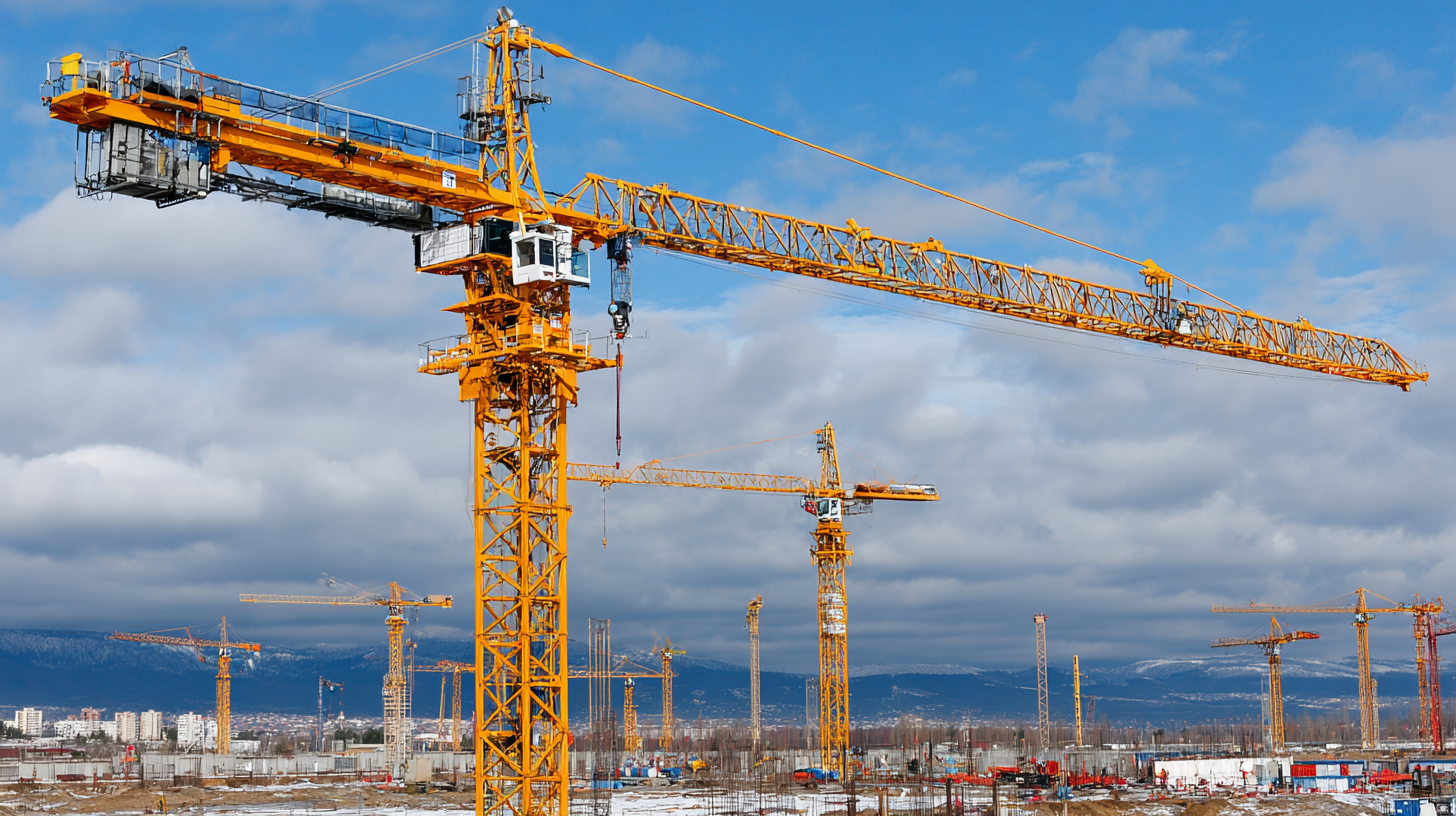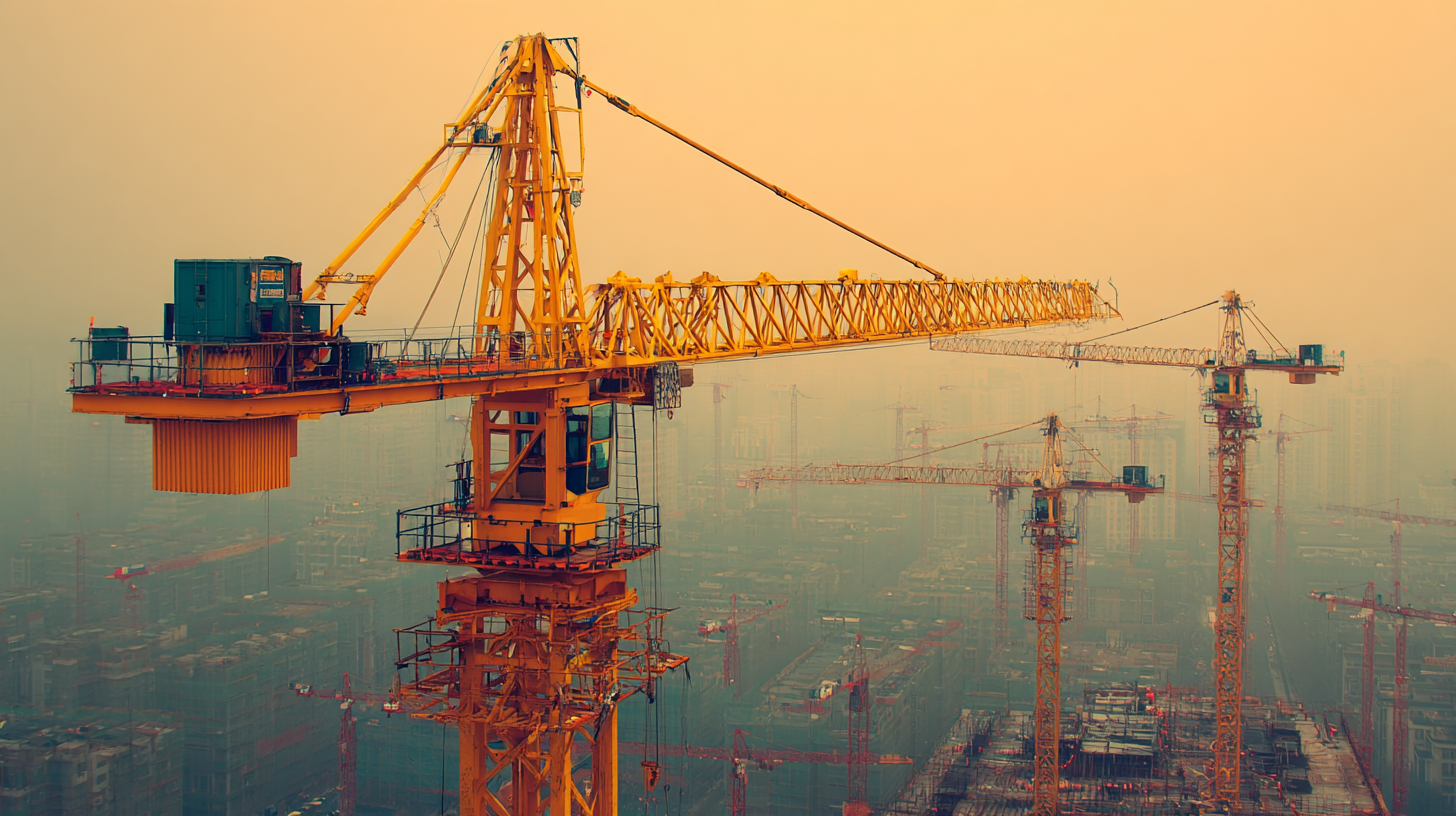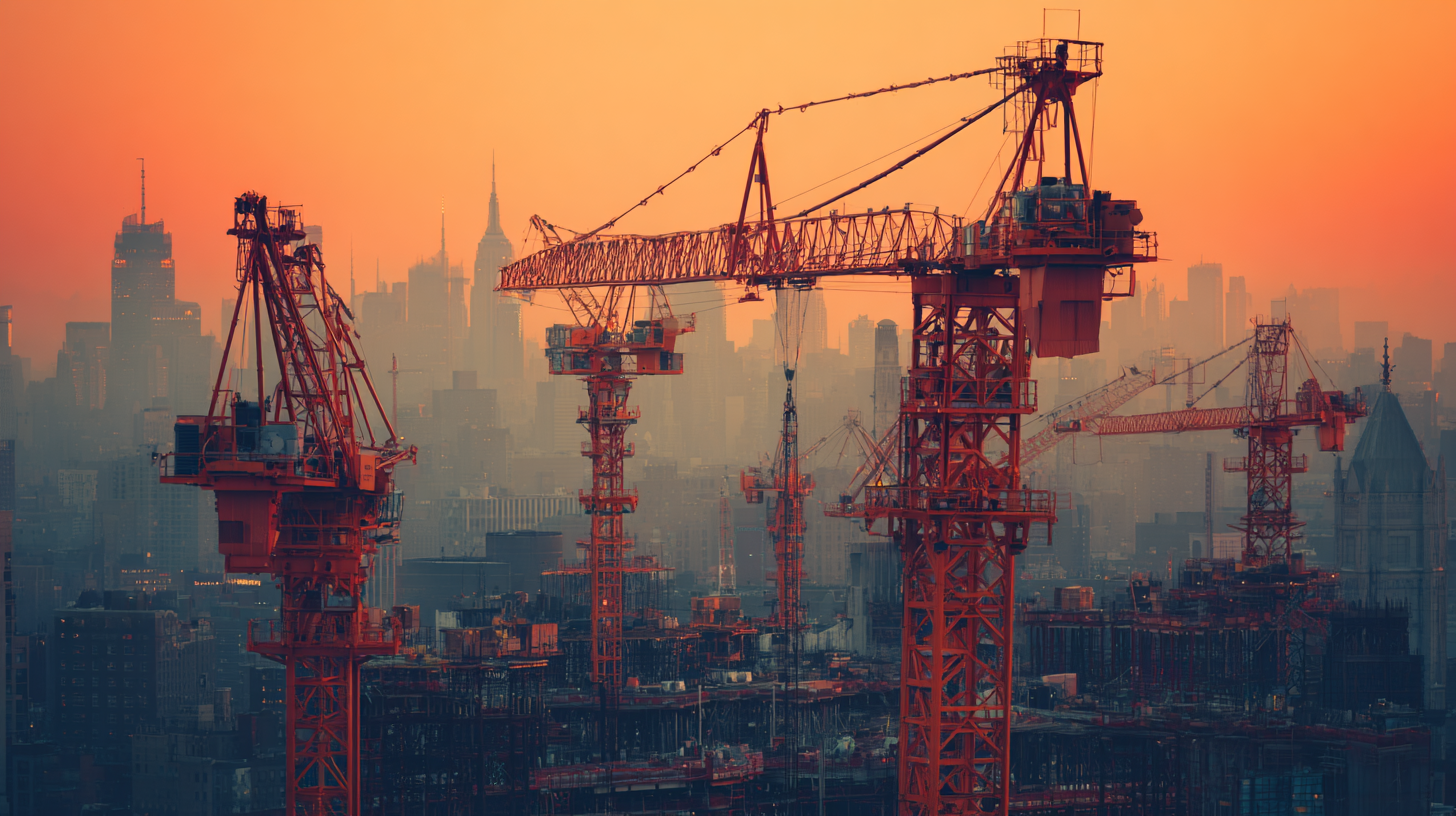 Choosing the right tower crane for your construction project can significantly impact both efficiency and safety on site. With a myriad of options available, it is essential to discern which type of tower crane best suits your specific needs. This blog will guide you through the alternatives in tower cranes, providing valuable insights and stunning pictures to enhance your decision-making process. From the latest advancements in crane technology to essential features to consider, our comprehensive analysis aims to equip you with the knowledge to make an informed choice. As visual learners, we’ll also showcase captivating tower cranes pictures that highlight the diverse capabilities and designs of these vital machines. Ultimately, selecting the best tower crane not only optimizes your workflow but also contributes to the successful completion of your project.
Choosing the right tower crane for your construction project can significantly impact both efficiency and safety on site. With a myriad of options available, it is essential to discern which type of tower crane best suits your specific needs. This blog will guide you through the alternatives in tower cranes, providing valuable insights and stunning pictures to enhance your decision-making process. From the latest advancements in crane technology to essential features to consider, our comprehensive analysis aims to equip you with the knowledge to make an informed choice. As visual learners, we’ll also showcase captivating tower cranes pictures that highlight the diverse capabilities and designs of these vital machines. Ultimately, selecting the best tower crane not only optimizes your workflow but also contributes to the successful completion of your project.
When selecting a tower crane for your construction project, several key factors must be taken into account to ensure maximum efficiency and safety. First and foremost is the height and reach of the crane. Depending on the scale of your project, you’ll need a crane that can reach the necessary heights and clear the obstacles surrounding the site. It’s crucial to analyze the building’s design and site layout to determine which crane configuration best suits your needs.
Another important consideration is the crane's load capacity. Each tower crane has a specific load limit, so evaluating the types of materials you'll be lifting and their weights is essential for safe operations. Additionally, the location of the site can impact both the selection and positioning of the crane. Factors such as wind speed, proximity to other structures, and ground conditions could influence your decision. By carefully assessing these elements, you can choose the best tower crane that aligns with your project's requirements.
| Factor | Description | Importance Rating (1-5) | Recommended Type |
|---|---|---|---|
| Max Load Capacity | The maximum weight the crane can lift. | 5 | Heavy-duty Tower Crane |
| Height under Hook | The height at which the crane can operate. | 4 | Standard Tower Crane |
| Reach Radius | The distance the crane can extend to lift materials. | 3 | Hammerhead Crane |
| Site Conditions | Terrain, soil stability, and surrounding structures. | 5 | All Terrain Crane |
| Setup Time | Time required to assemble and disassemble the crane. | 3 | Portable Tower Crane |
When selecting the best tower crane for your project, understanding the different types and their specific applications is crucial. Tower cranes are primarily classified into three types: fixed, luffing, and self-erecting cranes.
 Fixed tower cranes are commonly used on large construction sites due to their stability and high lifting capacity. They typically remain in a stationary position as they provide maximum height and reach, making them ideal for skyscrapers and large structures.
Fixed tower cranes are commonly used on large construction sites due to their stability and high lifting capacity. They typically remain in a stationary position as they provide maximum height and reach, making them ideal for skyscrapers and large structures.
Luffing cranes, on the other hand, are perfect for tight urban sites. Their unique ability to change the angle of their jib allows for greater maneuverability and flexibility, particularly in crowded environments. These cranes can work closely to other structures without causing obstruction, making them suitable for projects in densely populated areas or in small spaces.
Finally, self-erecting cranes are compact and easy to set up, often utilized for residential buildings or smaller construction projects. Their mobility and ease of use make them a popular choice for contractors needing efficient lifting solutions on smaller scales.
When selecting a high-quality tower crane for your construction project, it’s essential to consider several key features that can significantly impact safety, efficiency, and overall project success. As the tower crane market continues to expand, projected to reach approximately $30 billion by 2027, understanding the nuances of tower crane types—such as hammerhead, flat top, luffing jib, and self-erecting cranes—is crucial. Each type brings unique advantages; for example, luffing jib cranes are particularly suitable for urban environments as they can operate in tight spaces without swinging loads into nearby structures.
One of the most critical features to examine is the counterweight technology incorporated into the crane's design. Advanced counterweight systems enhance stability and reduce the risk of accidents, which is essential given that construction sites can be hazardous. Reports indicate that crane collapses account for a significant percentage of construction accidents, highlighting the importance of selecting equipment with proven safety mechanisms. Additionally, efficient load management systems are vital for optimizing performance and ensuring that the crane can handle the specific demands of your project without compromising safety or efficiency. Investing time in analyzing these features can lead to better decision-making and a more successful construction outcome.
Choosing the ideal tower crane for your project is not just about functionality; it's also about aesthetics and how well it integrates into your site. Stunning visuals play a key role in showcasing a crane’s presence on-site. Whether you’re planning a high-rise construction or a complex infrastructure project, capturing the right images can help convey your project's scope and ambition. Similar to how thrill-seekers climb skyscrapers for breathtaking views, a tower crane can elevate your project’s visual narrative.
When taking photos of tower cranes, consider the time of day and lighting conditions. Early morning or late afternoon provides softer, more flattering light that enhances the structure’s details. Additionally, experiment with different angles; a low-angle shot can create a dramatic perspective, making the crane appear even more imposing against the skyline.
Make use of modern technology, like drones, to capture stunning aerial footage of your tower crane at work. This approach not only highlights the crane's capabilities but also adds a dynamic element to your project visuals. Drones can navigate tight spaces and provide unique viewpoints that ground-level photography cannot match, ensuring your project stands out in the digital landscape.
This bar chart displays the average lifting capacity of various types of tower cranes used in construction. The data can help you determine which crane is best suited for your project needs.
When selecting the best tower cranes for your construction project, it is crucial to prioritize safety standards and regulations. Recent incidents, such as the tragic collapse in Henan that resulted in fatalities, highlight the importance of adhering to these guidelines. Tower crane incidents have raised alarms in the industry, prompting authorities to implement stricter safety measures and oversight. Understanding the specifications and operational protocols linked to tower cranes can significantly mitigate the risks involved.
Additionally, it is essential to stay updated on regulatory changes and industry standards, such as the recently issued standards by the Ministry of Housing and Urban-Rural Development. These regulations outline how to assess significant accident hazards in construction projects. Compliance with these safety standards not only protects workers but also ensures the integrity of the construction process. Thus, selecting tower cranes with a focus on compliance to safety protocols can reduce the likelihood of accidents and contribute to a safer working environment.

